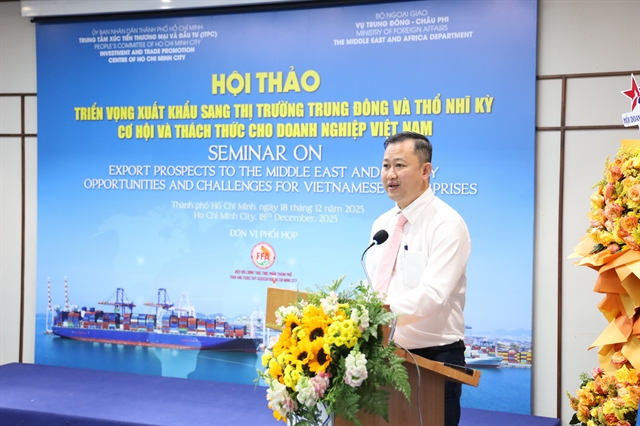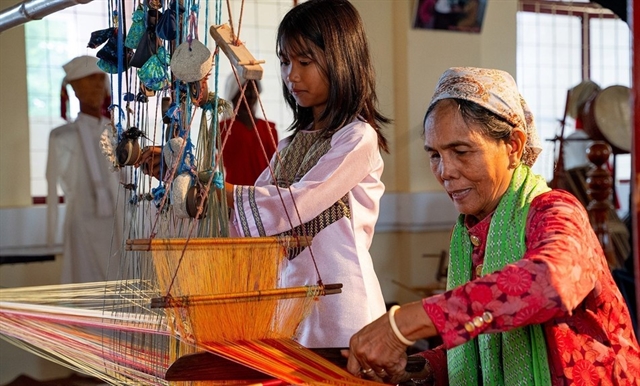 Features
Features
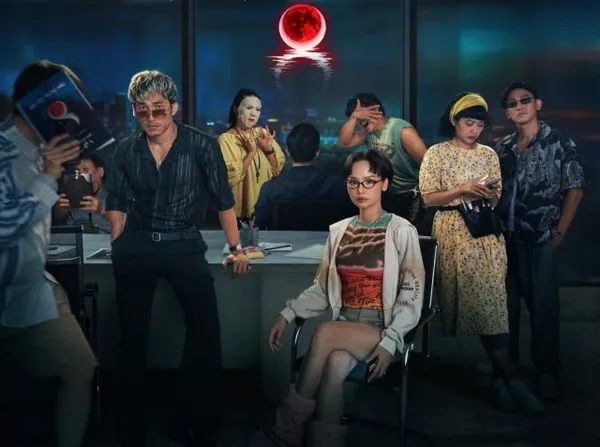
Aware of obstacles ahead, HCM City remains focused on recovery fundamentals: supporting businesses, improving infrastructure, further streamlining administration and improving human resources. Bồ Xuân Hiệp reports
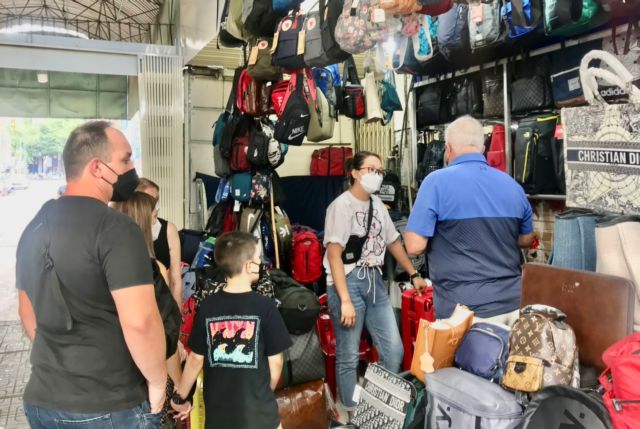
|
| Foreign visitors shop at Bến Thành Market in HCM City after the country opened to international tourism on March 15. VNS Photo Bồ Xuân Hiệp |
Aware of obstacles ahead, HCM City remains focused on recovery fundamentals: supporting businesses, improving infrastructure, further streamlining administration and improving human resources. Bồ Xuân Hiệp reports
Since mid-March, the HCM City-based Nhà Bè Garment Corporation has resumed operations after months of closure owing to the largest COVID-19 outbreak last year.
Huỳnh Thị Hồng Cúc, chairwoman of the company’s trade union, said the company had already won back its old orders and was looking for new ones.
Đào Ngọc Long, CEO of the Greenpan Joint Stock Company which makes building materials, said the outlook was bright since its resumed operations at the beginning of this year.
“With its production and assembly lines being mostly automated the company will be able to maintain production while ensuring pandemic prevention,” he said.
A recent survey by the American Chamber of Commerce in Việt Nam has indicated that HCM City is leading the country in economic recovery with almost all of its businesses having resumed production.
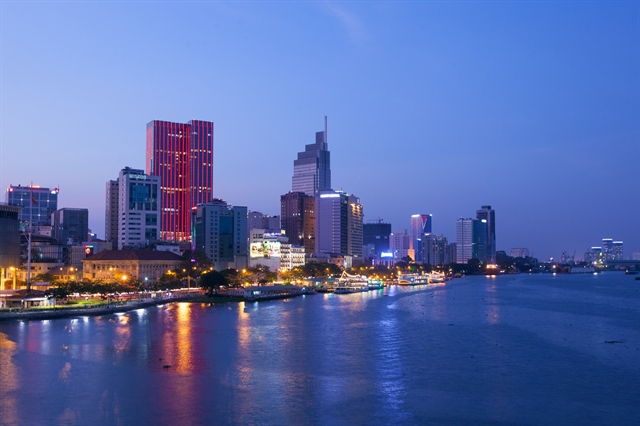
|
| Downtown HCM City as seen from the Thủ Thiêm New Urban Area in Thủ Đức City. HCM City leads the country in post-pandemic economic recovery. VNA/VNS Photo Phương Luân |
Prof Dr Trần Hoàng Ngân, director of the HCM City Institute of Development and Research, is upbeat: “The first half of 2022 will see the city’s economic recovery take root.”
While the pandemic had disrupted the economy, its recovery was on the right track after a cautious reopening, beginning late 2021, he said.
City authorities say more than 98 per cent of industrial enterprises in the city have restored production and most of them are already operating at full capacity.
Economists attribute the robust recovery thus far to the role played by businesses -- the economy’s backbone. A number of businesses have shown their resilience and ability to flexibly adapt to the new normal conditions.
According to the municipal Department of Planning and Investment, in the first quarter the city’s GDP grew by an estimated 1.8 per cent year-on-year.
Exports were up 3.5 per cent year-on-year at US$11.9 billion, while imports rose by 18.4 per to $17.4 billion. Tax revenues of VNĐ121 trillion marked an increase of 9.4 per cent, while spending reduced 33.8 per cent to VNĐ9.3 trillion.
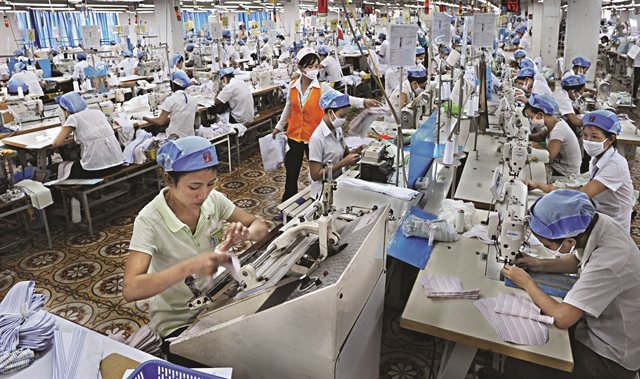
|
| A production line at the Việt Tiến Garment Corporation in HCM City’s Tân Bình District. Most businesses have resumed operations and many are expanding. VNA/VNS Photo Phương Luân |
Since early March, a number of firms have begun recruiting additional workers for production expansion as they try to make up for losses caused by the pandemic for much of last year.
According to the Management Board of HCM City Export Processing Zones and Industrial Parks Authority, businesses are recovering faster than expected.
During lockdown periods, only 652 businesses in the city’s export processing zones and industrial parks were able to maintain operations.
Most businesses have now resumed operations while many others are expanding.
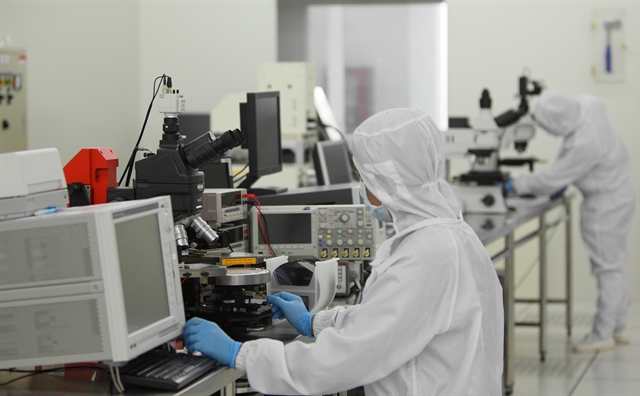
|
| Workers in protective gear at the HCM City Hi-Tech Park in the new Thủ Đức City. VNA/VNS Photo Phương Luân |
Perhaps the strongest endorsement of the recovery came from a recent statement of National Assembly Chairman Vương Đình Huệ, who praised the city for its achievements in socio-economic recovery, saying it had “exceeded expectations”.
At the end of 2021 the city’s legislative body, the People’s Council, passed a resolution on socio-economic development for 2022 and the next five years to chart the recovery path.
The resolution will guide the city in continuing to “fight the virus, improve the quality of urban government, support businesses, and improve the business climate,” the NA chairman said.
The resolution mentions the target of making HCM City a smart city with a strong digital economy, making it a financial hub for Southeast Asia by 2030, and for Asia by 2045.
It also targets per capita income of $13,000 by 2030, and $37,000 by 2045.
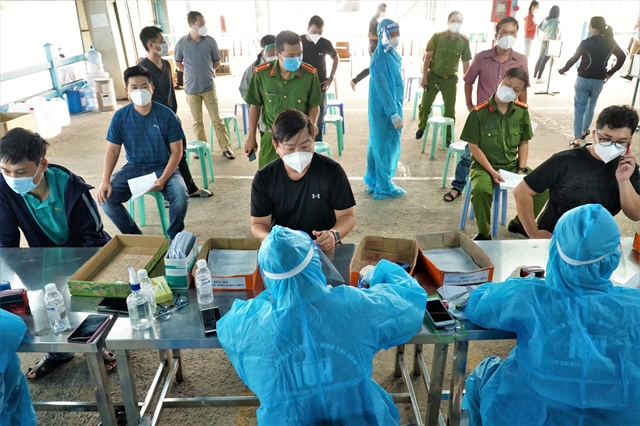
|
| A vaccination site at HCM City’s Gò Vấp District late last year. Experts attribute the city’s speedy economic recovery to Việt Nam having one of the highest vaccination rates in the world. VNA/VNS Photo Thu Hương |
The People’s Council divided the five-year economic recovery plan into two phases.
This year, the city will continue to focus on pandemic prevention alongside reviving the economy and restoring supply chains, creating employment, and ensuring workers’ welfare.
From 2023 to 2025 it will focus on resolving some chronic problems faced by the city, like traffic jams, flooding and air pollution.
Risk factors
Several experts have cautioned that the recovery process is fraught with risk, particularly from external events like the ongoing Russia-Ukraine conflict.
World oil prices remain high, and inflation is set to continue to rise. The pandemic remains unpredictable in other countries, especially China, which is continuing with its zero-COVID strategy, putting pressure on commodity prices.
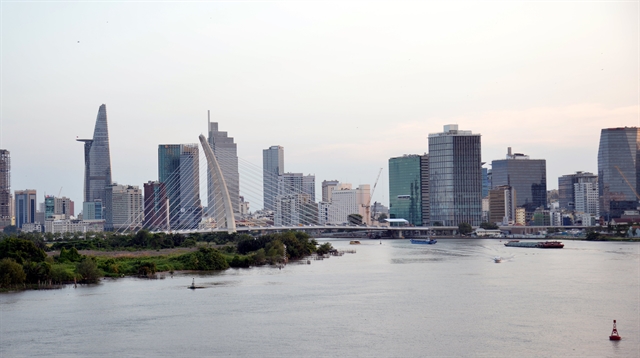
|
| The newly opened Thủ Thiêm 2 Bridge spanning the Sài Gòn River that links downtown District 1 and Thủ Đức City. Improving its infrastructure will be a key part of the city’s economic recovery efforts. VNA/VNS Photo Mạnh Linh |
In addition, the city lags behind several Southeast Asian peers in terms of living quality, competitiveness and urban planning.
Its infrastructure is ageing and major works are making tardy progress and the human resource base is not sufficient to meet the city’s current development needs.
Solutions
NA Chairman Huệ has stressed that the city needs to find lasting solutions to problems like traffic congestion, air pollution and frequent flooding if it is to maintain its position as the country’s economic locomotive.
It also needs to speed up delayed projects and cancel those delayed for too long.
“It is vital to speed up the progress of major projects such as metro lines No 1 and No 2, flood-prevention works, Tân Sơn Nhất international airport’s third passenger terminal, and the HCM City – Mộc Bài expressway,” he said.
"The city also needs to accelerate public spending," Huệ said, pointing out that last year it had spent less than VNĐ30 trillion. “It needs to increase the figure to VNĐ43 trillion this year.”
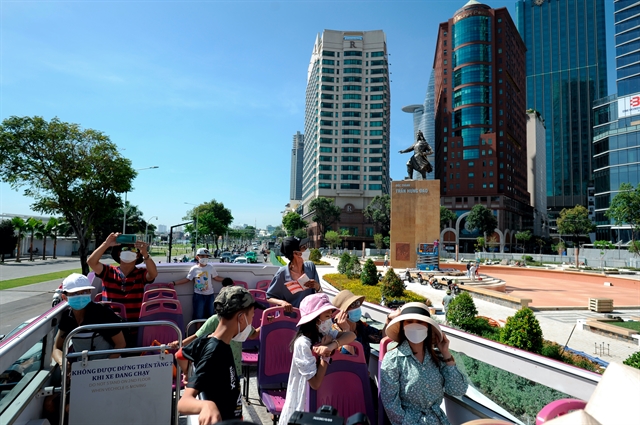
|
| Visitors take a hop-on-hop-off bus tour around HCM City. Việt Nam reopened to international tourism on March 15. VNS Photo An Hiếu |
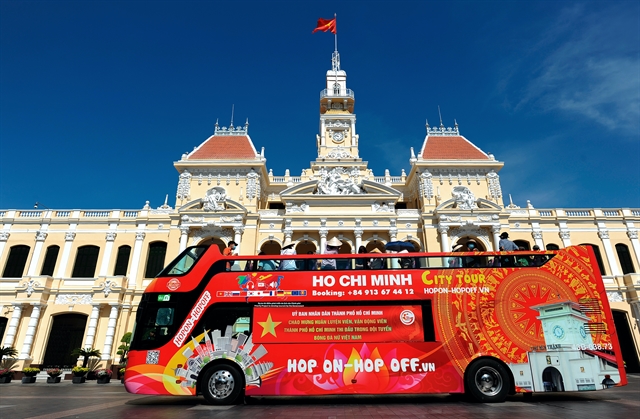
|
| Visitors take a hop-on-hop-off bus tour around HCM City. Việt Nam reopened to international tourism on March 15. VNS Photo An Hiếu |
Director Ngân of the Institute of Development and Research, said the city needed more financial resources to ensure sustainable recovery.
Trần Du Lịch, a member of the Prime Minister’s economic advisory group, said HCM City was hit hardest by the pandemic and therefore, required more intensive recovery policies.
The city should have specific policies to support enterprises, mostly SMEs, with measures like tax breaks and better access to preferential loans, he said.
The seriousness of pandemic impacts on the economy can be seen in the fact that for the first time in the last 35 years, the city saw a negative economic growth rate (minus 6.7 per cent).
But its resilience is also reflected in some key figures. Last year, despite pandemic impacts, the city’s revenues marginally exceeded the year’s target to reach VNĐ381.53 trillion ($16.81 billion). The city attracted more than $7.23 billion in FDI last year, up 38.48 per cent year-on-year.
The city is still the largest contributor to the central government’s coffers at around VNĐ368 trillion, or 25-27 per cent of the total every year.
Looking at the last five years, HCM City’s economy has expanded by an average of 6.41 per cent a year.
To build on these foundations, the National Assembly has allowed the city to keep a higher percentage of its budget revenues: 21 per cent instead of the previous 18 per cent.
Director Ngân welcomed this move: “With this new rate, the city will be able to keep VNĐ41.5 trillion a year, a huge resource for its economic recovery plans.” — VNS
2022 targets:
Revenue collection of more than VNĐ386 trillion ($16.66 billion), up 5.9 per cent
Economic growth of 6 - 6.5 per cent with the services sector accounting for more than 60 per cent
Labour productivity growth of 7 per cent
Number of workers with vocational training to account for 86 per cent of the total number
20.4 doctors and 42 hospital beds per 10,000 people
Unemployment rate of under 4 per cent
Creation of 300,000 jobs
Reduction of poverty rate by 0.35 per cent and near-poor households by 0.2 per cent
100 per cent of children aged three to 18 to attend school and a ratio of 300 classrooms per 10,000 students
Fertility rate of at least 1.39 children per woman
Transport uses to account for 13.32 per cent of urban land
Housing per capita of 21.2 square metres and total housing area of 6.6 million square metres
Urban greenery area of not less than 0.57 square metre per capita.
To be among the top five cities in the provincial competitiveness index
Reduce traffic-related deaths and large fires by at least 5 per cent.

